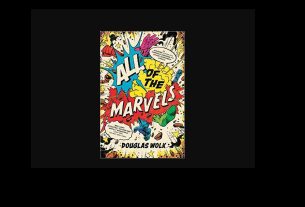With Make It So: Interaction Design Lessons From Science Fiction, authors Nathan Sherdoff and Christopher Noessel give us an in depth survey of the best ideas that sci-fi movies have to offer for creating user interfaces. The premise of the book is that real world designers can learn a lot from the blue sky interfaces created for sci-fi productions — interfaces unfettered by the constraints of “modern” day technology.
If you like the way your favorite Web site or computer application works, thank a user experience professional. User Experience (Ux for short) is the practice of designing interfaces with the people who will actually be using them in mind. Ux professionals sweat the details of form and functionality to deliver interfaces that feel so natural you don’t even have to think about them. Ux designers are most successful when you notice their work the least.
Science fiction often gives us a glimpse at what user experiences might look like in the future, although they are by necessity designs rooted in the forward thinking technologies of the period the story was created in. Star Trek, for example, went from clunky switches and hand held communicators in the 1960s original series to touch screens and omni directional communicator pendants by the 1980s next generation. Star Trek was around 20–25 years ahead of its time with these user interfaces. But sci-fi can also get some big things wrong.
I was watching “The Naked Now” — the second episode of Star Trek: TNG — with my daughter recently. Data is looking up a vague reference Riker remembers reading of a starship’s encountering people showering in their clothes as a mysterious inhibition-reducing plague ravages the ship. Data begins to pour through the entirety of Star Fleet’s accumulated knowledge, screen by screen, to find this one report. My daughter — speaking almost 25 years after this was filmed — looked puzzled and asked, “Why doesn’t he just Google ‘wearing clothes shower’?”
Of course the people creating the fictional user experiences in sci-fi media have the benefit of getting to design something that doesn’t actually have to work. Their interfaces just have to look good and be convincing on screen in order to be successful. Star Fleet’s customer service department won’t receive irate calls from Jean Luc Picard if the recent OS update causes his 756th generation iPad to inexplicably translate the Klingon for “We come in peace” as “Hab SoSlI’ Quch” (actually the Klingon for “Your mother has a smooth forehead”) in the middle of sensitive negotiations.
Make It So takes a serious look at the interfaces created in many of our favorite movies and TV shows. The authors break them down into different types of Ux, including mechanical controls, visual interfaces, volumetric projection, gesture, sonic interfaces, brain interfaces, augmented reality, and anthropomorphic. These are all examined in detail with examples provided and simple tips and tricks that even design novices can understand.
The writers also provide inside information on how many of the interfaces came into being. For example the famous Star Trek: TNG LCARS interface (short for Library Computer Access and Retrieval System) had more to do with cost than innovation. The show’s budget couldn’t accommodate the hundreds of individually installed and lit buttons used in the original series. So, production designer Michael Okuda and his staff developed the now famous flat panel interface as a more cost-effective alternative, and the rest, as they say is, history… or future history, depending on your point of view.
If you are a sci-fi fan, then you will enjoy this book regardless of whether you are an interface designer or not. Although there is a bit of jargon, it’s not too difficult to pick up and put down, delving into sections of interest. Whether you work in the user experience arena or not, this books is a must read for science-fiction fans looking for a fun non-fiction read. Make it So is full of insights and ideas that can propel your own interface ideas forward into the final frontier.
Make It So: Interaction Design Lessons From Science Fiction, Rosenfeld Media, $39
Disclosure: The publisher provided a copy of the book for review.





